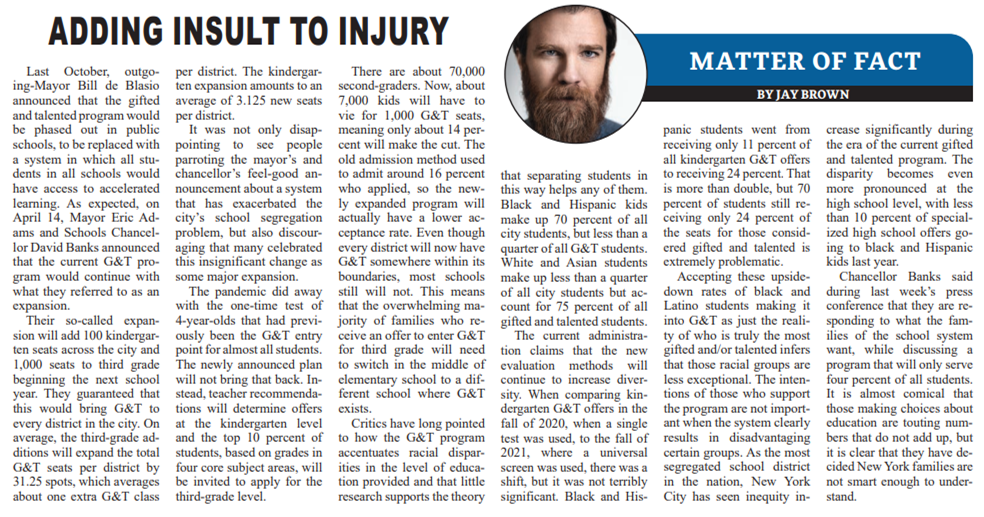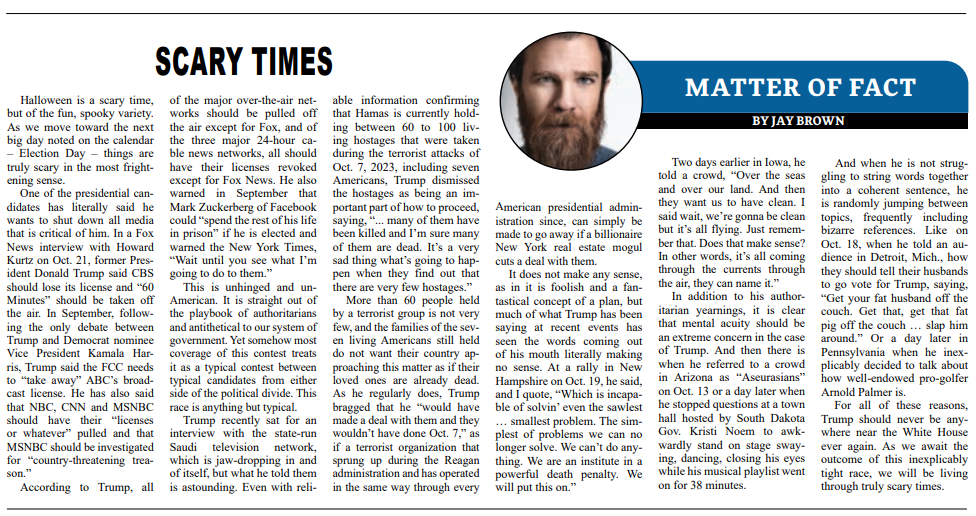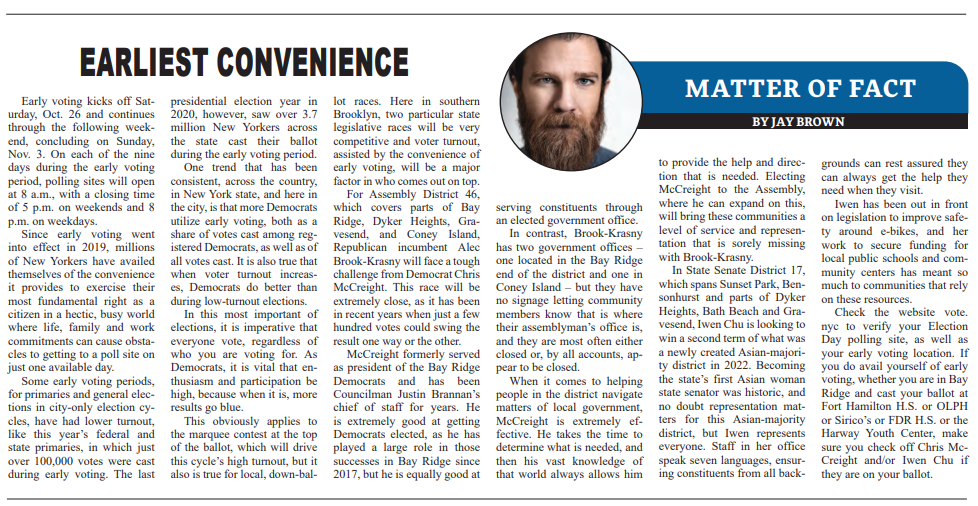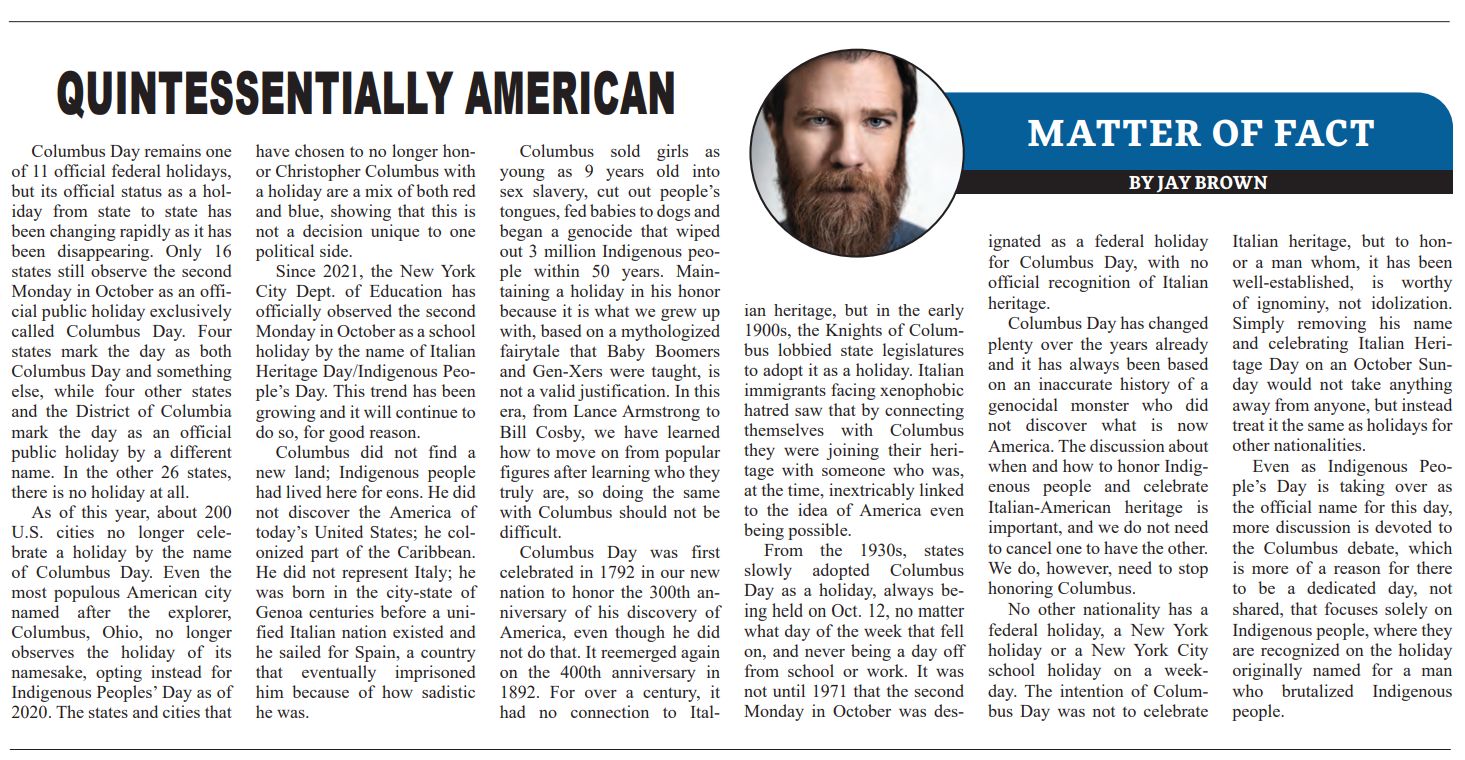This column, from the weekly opinion piece MATTER OF FACT, first appeared on BrooklynReporter.com, the Home Reporter and Spectator dated April 22, 2022
Last October, outgoing-Mayor de Blasio announced that the gifted and talented program would be phased out in public schools, to be replaced with a system in which all students in all schools would have access to accelerated learning. As expected, on April 14, Mayor Adams and Schools Chancellor Banks announced that the current G&T program would continue with what they referred to an expansion.
Their so-called expansion will add 100 kindergarten seats across the city and 1,000 seats to third grade beginning next school year. They guaranteed that this would bring G&T to every district in the city. On average, the third-grade additions will expand the total G&T seats per district by 31.25 spots, which averages about one extra G&T class per district. The kindergarten expansion amounts to an average of 3.125 new seats per district.
It was not only disappointing to see people parroting the Mayor’s and Chancellor’s feel-good announcement about a system that has exacerbated the city’s school segregation problem, but also discouraging that many celebrated this insignificant change as some major expansion.
The pandemic did away with the one-time test of 4-year-olds that had previously been the G&T entry point for almost all students. The newly announced plan will not bring that back. Instead, teacher recommendations will determine offers at the kindergarten level and the top 10% of students, based on grades in four core subject areas, will be invited to apply for the third-grade level.
“Black & Hispanic kids make up 70 percent of all city students, but less than a quarter of all G&T students.”
Citation….
There are about 70,000 second graders. Now, roughly 7,000 kids will have to vie for 1,000 G&T seats, meaning only about 14 percent will make the cut. The old admission method used to admit around 16 percent who applied, so the newly expanded program will actually have a lower acceptance rate. Even though every district will now have G&T somewhere within its boundaries, most schools still will not. This means that the overwhelming majority of families who receive an offer to enter G&T for third grade, will need to switch in the middle of elementary school to a different school where G&T exists.
Critics have long pointed to how the G&T program accentuates racial disparities in the level of education provided and that little research supports the theory that separating students in this way helps any of them. Black & Hispanic kids make up 70 percent of all city students, but less than a quarter of all G&T students. White and Asian students make up less than a quarter of all city students but account for 75 percent of all gifted and talented students.
The current administration claims that the new evaluation methods will continue to increase diversity. When comparing kindergarten G&T offers in the fall of 2020, when a single test was used, to the fall of 2021, where a universal screen was used, there was a shift, but it was not terribly significant. Black and Hispanic students went from receiving only 11 percent of all kindergarten G&T offers to receiving 24 percent. That is more than double, but 70 percent of students still receiving only 24 percent of the seats for those considered gifted and talented is extremely problematic.
Accepting these upside-down rates of black and Latino students making it into G&T as just the reality of who is truly the most gifted and/or talented infers that those racial groups are less exceptional. The intentions of those who support the program is not important when the system clearly results in disadvantaging certain groups. As the most segregated school district in the nation, New York City has seen inequity increase significantly during the era of the current gifted and talented program. The disparity becomes even more pronounced at the high school level, with less than 10 percent of specialized high school offers going to Black and Hispanic kids last year.
Chancellor Banks said during last week’s press conference that they are responding to what the families of the school system want, while discussing a program that will only serve 4 percent of all students. It is almost comical that those making choices about education are touting numbers that do not add up, but it is clear that they have decided New York families are not smart enough to understand.




